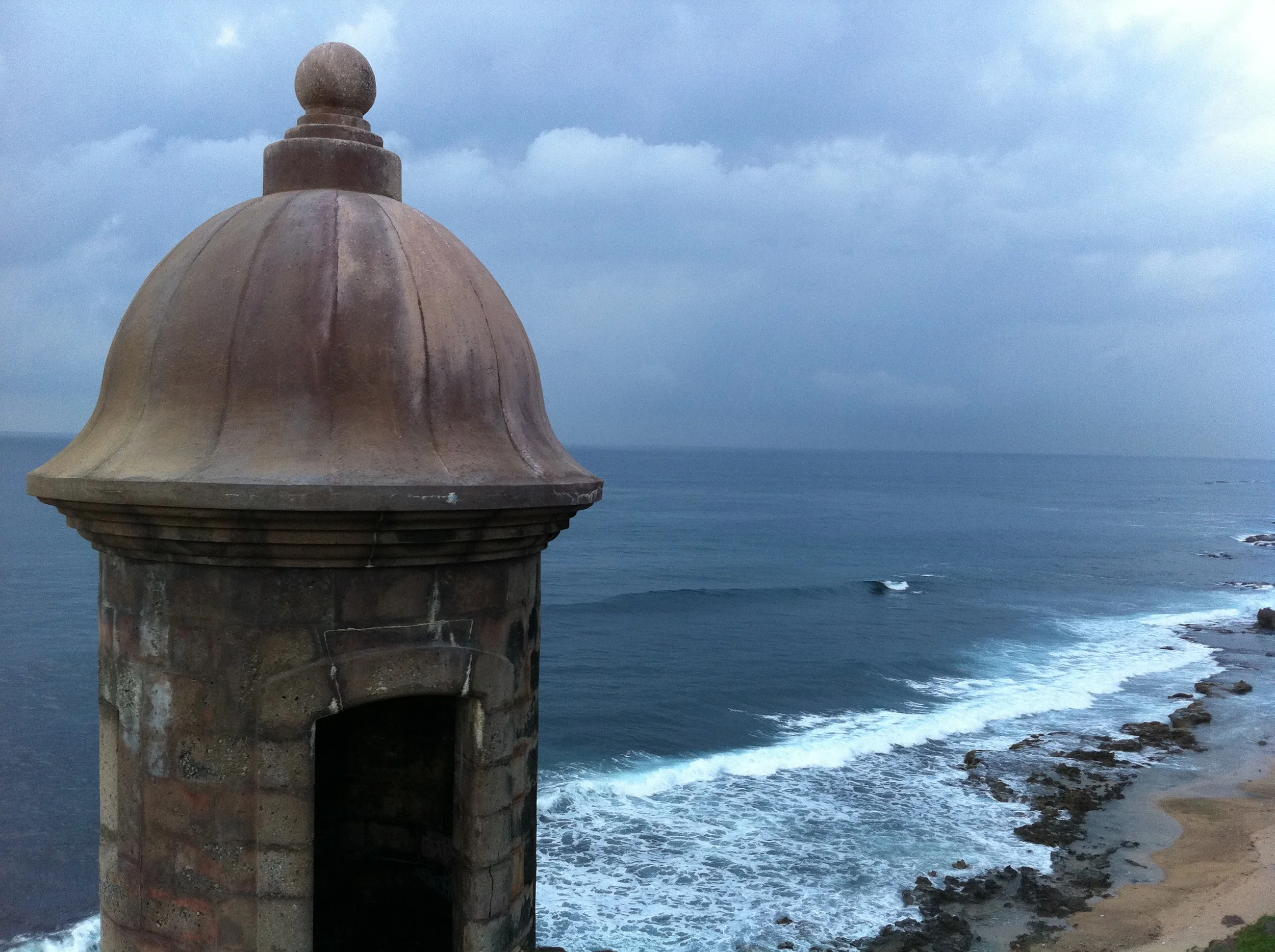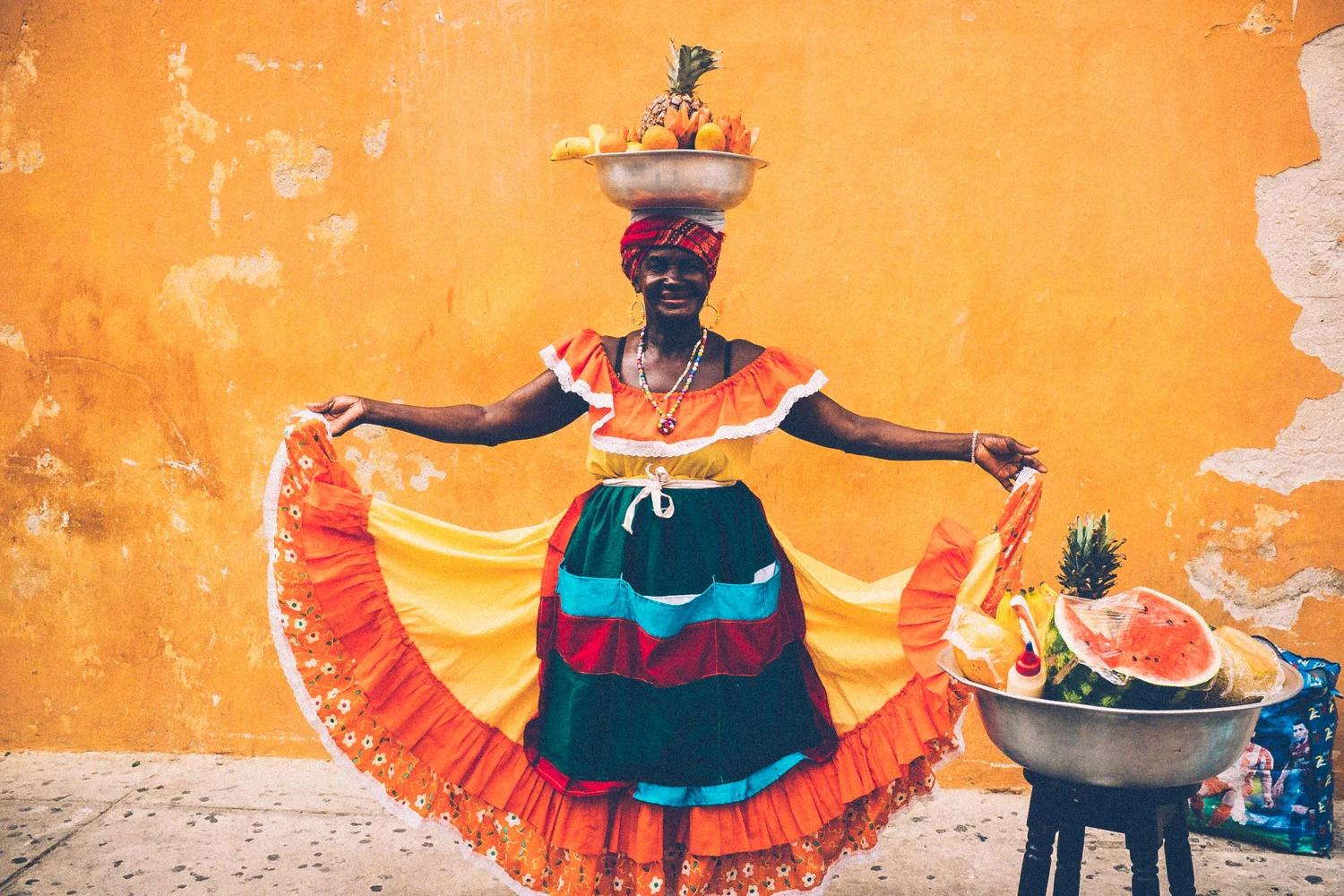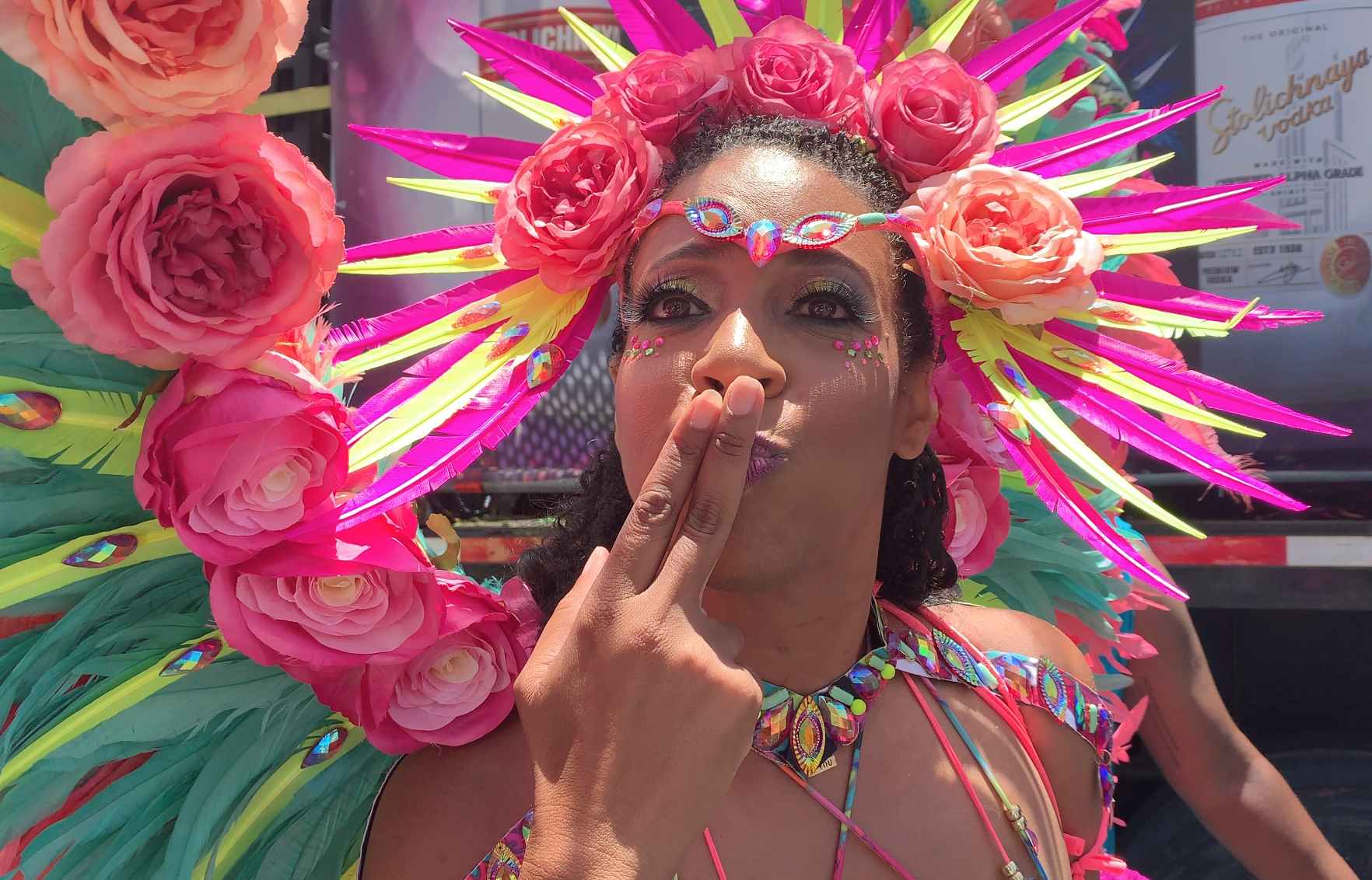In My Carry-on: The Essentials According to Five Traveling Entrepreneurs
Paradise in Kenya: A Visit To The Giraffe Manor
Three Days in Cartagena: How To Make The Most of Your 72 Hours
Cartagena is a magical little town characterized by it’s deep colonial roots and breathtaking architecture. Whether you are strolling the streets for purpose or pleasure, there is always a little gem to discover around every corner. For me, the Colombian gastronomy scene, energetic nightlife, and rich history made it the perfect playground. Below is an itinerary for your 3 days in Cartagena.
Day 1
Morning- Explore old town
○ Discover beautiful buildings, fun shops, and great food on every street within the walled city.
Afternoon- Drinks at the Town House Hotel
○ Unwind at this rooftop bar with some specialty cocktails. The recently opened hotel has an amazing view of the city.
Evening- Tapas at Cafe Luna
○ Fill your belly with some amazing tapas. I especially enjoyed the potato and the octopus dishes.
Late Night- Cocktails at Alquimico
○ Enjoy a variety of activities in this multi-level bar. Play pool with friends, to sip cocktails, and or socialize on the rooftop.
Day 2
Morning- Visit Castillo San Felipe de Barajas
○ Explore the historical site and see some of the best views of the city. I recommend getting there when it opens or around 4 PM (two hours before closing). The sun is quite hot and there’s not a lot of places for shade.
Afternoon- Verona restaurant for lunch
○ Enjoy gourmet pizza and fresh juice at this getaway outside of Old Town. This is the perfect place for some peace and quiet after spending a morning filled with tourists.
Evening- Dinner at Carmen
○ Experience amazing local seafood and elegant scenery. Carmen is the perfect date spot and a pleasant restaurant to unwind.
Late Night- Dancing and cocktails at Havana
○ Show off your dance moves at Cartagena’s most popular bar. Havana has a reputation for wild nights and playful adventures. End your second day with some drinks, laughs, and new dance moves.
Day 3
Morning- Swim in the rooftop pool at Hotel Movich Cartagena De Indias
○ Purchase a day pass if you’re not a guest at the hotel. Not only is the view is breathtaking, but the swim is super refreshing during the hot days.
Afternoon- Lunch at La Cevicheria
○ Enjoy some of the best seafood in town at this classic restaurant. This little hot spot has grabbed the attention of many travelers over the past few years and is worth a quick visit.
Evening- Dinner at Cuzco Cocina Peruana
○ Experience spectacular service and breathtaking interior design at this elegant restaurant. I highly recommend the octopus (it was the best I’ve ever had). Also try the ceviche and salmon carpaccio.
Did we miss anything? Comment below and let us know some of your favorite spots in Cartagena!
Kaitlyn Holstine
Kaitlyn Holstine is a digital nomad currently backpacking South America. She creates writes about her travels on her blog Kaitlynh.com and youtube channel. You can find Kaitlyn on instagram @Kaitlyn_Holstine and follow along on her adventure!
Six Steps to Take NOW If You Wish To Travel More
The Pros & Cons of Solo Travel
Why Singapore Should Be on Your Southeast Asia Travel List
Singapore. Before ever setting foot in the country, its name was all I knew about it, and the only reason I initially decided to visit was because I was in Southeast Asia for a few months and it was a cheap flight. But what I found once I got there surprised even me; the people, innovation and rich history of the country brought me back not once, but twice more in the span of three months, making it one of my favorite countries in the world, which says a lot given that I’ve been to places like Kenya, India, Jordan, Tajikistan, Belgium, Cuba and Iceland.
Falling in love with the country was a beautiful surprise, and I’m sure others will feel the same if they take the time to get to know it. Here’s why Singapore should be on your Southeast Asia travel list:
A beautiful day in the Singaporean neighborhood of Kampong Glam, which is rich with mosques and Middle Eastern restaurants
Singapore has a rich history
Before it was the fourth richest country in the world, Singapore had a rough history. In the 14th century, Singapore was an integral trading port known as Temasek. The Portuguese eventually came over in the 1600s, and attacks on the port were frequent. In the 1800s, Sir Thomas Stamford Raffles arrived and the country became a crown colony of Britain. The only issue was that the Dutch also laid claim to the land, and what ensued was a hefty amount of political maneuvering to avoid conflict while allowing the British to still claim it as a crown colony.
As the decades passed, the colony turned into a thriving city due to the influx of Chinese immigrants and Indian convicts who helped supply the demand for rubber and emerging automotive industry. But all of this wealth and prominence came to an end with WWII, when the Japanese occupied Singapore, naming it Syonan-to, meaning “Light of the South.”
I won’t ruin the rest of the story for you, but the country’s rise from the swamps of the Straits of Malacca to being one of the four Asian Tigers (high-tech industrialized Asian countries) is admirable and inspiring. You can spend the better part of a day getting lost in all of the history at the National Museum of Singapore.
The infamous Supertree Grove at night in downtown Singapore
Innovation is at the core of Singapore
Given the fact that Singapore amassed an incredible amount of wealth in a relatively short amount of time, and without any significant natural resources, innovation is at the core of the Lion City. And while “innovation” is always a nice and lofty term to throw around to impress people, the way it manifests in Singapore is downright cool.
One of these innovations is the Supertree Grove, which is a grove of 12 supertrees (18 in total throughout the property) located at the Gardens by the Bay. A supertree is an artificial tree that is designed to mirror and replicate the function of real trees. They’re anywhere from 25 to 50 metres tall (80 - 160 feet /16-story building) and are built with a concrete core, trunk (which reinforces the core), planting panels (panels installed on the trunk so that living plants can live and grow on them) and a canopy. Photovoltaic cells (the little black and blue pieces that make up solar panels) are attached to them in order to harness solar energy, which can be used to light the trees, just like how real trees undergo photosynthesis. They also collect rainwater, which can be used for irrigation and fountain displays, as well as serve air intake and exhaust functions as part of two conservatories located not far away from the grove. Visitors can view a beautiful light show every night at 7:45pm and 8:45pm. I suggest you grab a spot on the ground and prepare to be amazed.
It’s important to note that Singaporean innovation isn’t only limited to cool-looking trees. It extends to how to country purifies water, runs it’s hyper-efficient metro (Mass Rapid Transit) system and much more. Other places to visit include Fort Canning Park, Botanic Gardens, Sentosa and Clark Quay for a night out.
The Marina Bay Sands Hotel, which features a beautiful club, pool and panoramic views of the city
Everyone speaks “Singlish”
Even after visiting Singapore three times, it’s still a bit difficult to explain Singlish in simple terms. It’s sort of like another language, but more so like a dialect consisting of English, Malay, Tamil and Hokkien words. Everyone in Singapore speaks it, but to different extents.
After conducting a brief study of linguistics, I found that Singlish can be classified in the three sociolects (dialects of social classes):
Acrolect - This sounds like your run-of-the-mill Standard British English. It’s spoken clearly, and anyone who speaks English will be able to understand it.
Mesolect - This sociolect has different verb tenses and other variants that make it a bit more difficult for someone outside of Singapore to understand. It contains words like “lah” in it.
Basilect - This is the hardest sociolect for anyone outside of Singapore to understand. It’s heavily peppered with non-English words and people who speak it tend to go full Singaporean with a quick, clipped accent, which is cool in and of itself.
I found Singlish to be one of the most fascinating aspects of the country. In 2000, the government created a campaign to increase proficiency of Singaporeans speaking Standard British English, called the “Speak English Good Movement.” Rarely does anyone in the country not speak English, unless they were born before the 1950s or prefer not to learn it. Many Singaporeans, given the diversity of the country, speak a second or third language native to their ethnic roots.
The beautiful island of Sentosa, only a few minutes (MRT, bus, car) from mainland Singapore
Singapore is ethnically diverse
When I first arrived in Singapore, I was shocked by how clean and orderly the Mass Rapid Transit (MRT) system was; people waited in line before the doors opened and entered only after people exited the train, which was completely foreign to someone like me, from New York City. The second observation that pleasantly surprised me was seeing public signs in four languages: English, Chinese (Mandarin), Tamil and Malay.
Expatriates aside, the country was built on immigrants. Remember those Chinese immigrants who came over, as well as the Indian convicts? They, along with the Malay population, make up 95.7% (2013 figures) of the country’s population, which you can see from neighborhood to neighborhood.
Ethnic diversity is not only a marvelous attribute to have, but it’s also mandatory for a country to grow and thrive in a humane fashion, meaning that those who don’t look one way or another aren’t viewed as outcasts; an unfortunate reality in countries with more homogenous populations. But that’s not to say that ethnic diversity is a panacea to all social, cultural and political problems. In fact, race is at the heart of Singapore’s areas for improvement, given that people still discriminate against others based on their heritage.
Nothing special here, just hanging out at my Airbnb in the Kallang neighborhood of Singapore
A country for foodies
A long history of immigrants and expatriates (what’s the difference, really) flooding into the Lion City made it fertile land for a foodie’s paradise, which it certainly is. Tourists and locals alike visit Hawker centres, which are complex food courts featuring dozens of cuisines, beverages and sweets from China, India, Malaysia and other countries. I even saw one place selling Costa Rican food.
Now, it’s important to note that not all hawker centres are made equal. Some focus more on one type of ethnic cuisine over others. My personal favorite, Lau Pa Sat, is also one for tourists, but that doesn’t take away from the fact that it features a wide array of delicious food. I recommend the Indian vegetarian stall and a nice cup of fresh soursop juice with the little bits of fruit in it. Other spots I enjoy include: Working Title (out of this world burgers and fries), The Lab (Breaking Bad themed brunch spot), Toast Box (a must have experience of Singaporean kaya toast), Piedra Negra (Mexican) and All In at Bali Lane (ice cream and desserts).
Just a few young urban professionals hanging out in Singapore
Something for everyone
There are many more reasons why Singapore should be on your Southeast Asia travel list, such as its vibrant nightlife, hipster-ish but worthwhile bookstores and bakeries (did I say it was foodie paradise?), but you’ll just have to go and see for yourself. The Lion City may not be on everyone’s “must-see” list, but if you’re in the area, there’s no reason not to go. There’s something for everyone and if you stay open-minded, you won’t be disappointed.
Ever been to Singapore or want to go? Share your thoughts in the comments below. The more the merrier.
Mateo Askaripour
Mateo is a writer who quit his flashy job in NYC to live life on his own terms. He’s done everything from working at an orphanage in Nairobi to building a new university in Abu Dhabi to sleeping on volcanos in Guatemala. And right now, he’s working to get his novel published. His writing has been featured internationally in publications including Matador Network, GoAbroad, Víkurfréttir, Caribbean News Now and Black & Abroad. Regardless of where he is, he’s always working. To keep up with him, follow him on Instagram & Twitter at @AskMateo and read one of his elaborate stories at SwagPapi.com.
The Walk of Shame After "Sh*tholes": Living Abroad as an American in the Time of Trump
Lately, living abroad as an American has begun to feel like a series of never-ending “walks of shame.” You know the dreaded “walk of shame.” Heavy bags under your eyes, clothing scented with hints of last night’s escapades, and the embarrassing moment you're forced to walk past people wondering what the hell you’ve been doing all hours of the night.
Having lived abroad in Western Europe on/off since 2001, I oftentimes find myself the lone American in the group. Unknowingly, I’ve become the overseas correspondent on anything and everything to do with the U.S. of A. And, while initially intrigued by people genuinely wanting to hear my perspective on America, I’ve started to find the recurring conversations wearing me thin.
Remember in June 2017, when the United Kingdom was teetering from the London Bridge terror attacks? Instead of supporting one of the United States’ closest allies, the president used the opportunity to promote his proposed Muslim travel ban. To make matters worse, Trump turned to Twitter to question the mayor of London’s response to the tragedy. These were hardly actions you’d expect from the leader of the free world. As an American living abroad, reading the news made me feel like burying my head in the sand.
Previously, when America-related events happened, I would join in the light-hearted banter with my English colleagues. However, this time was different. Lives had been lost. As I scrolled through social media, I noticed no one was questioning the president’s foul comments. I knew the majority of my friends weren’t subjected to the same misconceptions I was as an American abroad. But, their silence made me wonder whether they cared at all.
Sometimes during a “walk of shame” you get lucky, and the people you’d least like to see are nowhere to be found. However, Trump’s public criticism would allow the world to form their own opinion versus relying on my narrative. I felt ashamed to be American, and I didn’t want to talk to anyone about it. Serial travelers likely can relate to this feeling. It’s similar to the nervous sensation you get before handing your American passport to border control in unwelcoming countries. That moment when you’re fearful of being the next person escorted into a windowless back room for questioning.
I never thought I’d feel that disgusted with America again. Then, I read the allegations of Trump referring to Haiti, and African countries as "shitholes" during a meeting on immigration. As a Ugandan-American, born in the United States to immigrant parents, these comments were a slap in the face.
My father grew up along the shores of the River Nile, in a sleepy village called Budondo. After emigrating to the United States in the 70s, my father finished his residency and started his own Cardiology practice. Anytime me, or my siblings acted like privileged children, my father would tell us stories of studying by candlelight, and walking several miles each way to school. My father paid taxes, put three children through university, and saved lives on a daily basis. And, while people from my parents’ generation emigrated to the United States in search of a better lives, their countries didn’t deserve to be labeled as shitholes by the president.
As my dreaded iPhone alarm rang following the news of Trump’s comments, I hit snooze several times thinking of my English coworkers and their questions. All I wanted from the day was get on with my work. The president had multiple opportunities deny the "shithole" allegations, but nothing of the sort happened. Trump’s nonchalance reminded me of the time he addressed a mostly white crowd while asking African-Americans for their vote. After patronizing African-Americans for living in poverty, the quality of their schools, and unemployment rates, Trump said, “what in the hell do you have to lose by trying something new, like Trump?” After watching the events and commentary of "shitholes", I’m afraid the answer is EVERYTHING. And, If this is what “Making America Great Again,” is all about then the American dream is in fact a nightmare.
And, what happened to my parents who emigrated to the United States in 1975 to chase the American dream? Five years ago, they returned to their supposed "shithole" country. When I ask them how they feel about the move, they say, “We wish we moved back earlier.”
Jonah Batambuze
Jonah, co-owner of lifestyle brand KampInd, is a multimedia artist, entrepreneur and UK-based digital strategist focused on shifting perceptions through design and fashion. You can find Jonah on Instagram, Twitter, and Facebook at @KampInd and check out KampInd inspiring multicultural leaders to change the world at www.kampindusa.com.
Oslo: A Visitor's Guide
Oslo definitely set itself apart as a city of art. From the sculptures in Vigeland Park & seeing Munch’s “The Scream” in person at the National Gallery, to experiencing dope black musicians at Oslo World, the city showed its quiet surface hid an underlying current of creativity. Here's our guide to exploring the city.








































